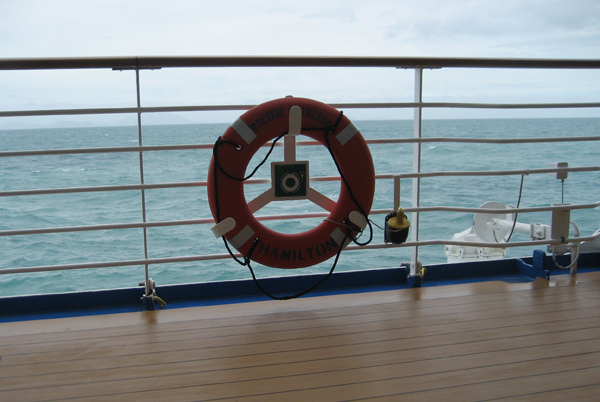
The void between sea and sky, Southern Indian Ocean. © UrbisMedia, 2011
In an age in which it is possible for a drone to take out a terror suspect sitting in a public toilet in Yemen it is reasonable to wonder how a Boeing 777 can seem to vanish into thin air. For days now search ships have been scouring the southern Indian Ocean in an attempt to reach and identify satellite photographed debris that might be the remains of MH370, that might lead to its black boxes, that might further lead to some answers to the myriad of questions surrounding this ill-fated flight, and provide some closure for the tormented families of its victims.
Each day I wonder, like many others, why with all the planes ships in high technology they are unable to reach the debris to begin answering these questions. Then I remember that a few years ago I myself was sailing through these seas and wondering at how it was possible to be so remote in a world that we think has been diminished by the speed of our transportation and communication technology.
I was sailing in a small cruise ship (one without waterslides, Disney characters, and Americans who think wet T-shirt contests are what travel is all about) from Cape Town to Perth. I had been on some long stretches at sea before, but this one had eight “sea days” between these ports, eight days to be spent mostly lounging in a deck chair and, as is my custom, reading books about the region of the world in which I was traveling. But my other pleasure at being at sea is to sit and watch the sea itself, taking in its many moods, forms and colors, it’s endless change, absorbing a visual repertoire to illustrate my readings. I also enjoy spotting its fauna, the flying fish, dolphins racing along in the bow wake, the occasional whale spouting or shark dorsal menacingly increasing the surface.
But for these eight days, sailing mostly in the latitudes of the 30s in the South Indian Ocean’s I saw no flying fish or other fauna. Not only that, I saw no other ships, not a single freighter, tanker, no cruise ships that are common in counters in other sea lanes. Curiously, when I looked above, I don’t recall even seeing the familiar contrails of a commercial jet at 35,000 feet. Sitting there in my deck chair it seemed as though we were in a dead zone, as though we had sailed off the end of the earth.
It was easy for me to imagine that. One of the reasons I chose this particular route was that I had long been fascinated by tales such as that of Alexander Selkirk,* whom Daniel Defoe had fashioned into Robinson Crusoe in 1719 and later inspired Jules Verne’s The Castaway of the Flag, in 1900, about the Swiss Family Robinson.
Whether I was in the waters of the Southern oceans or not I was always captivated by tales, real and imagined, of islands, deserted or people with strange peoples, missionaries, escapes from perilous circumstances,**** mutinies and castaways,** and shipwrecks.*** In particular, on this occasion I was strongly interested in the history of “criminal transportation” from the British Isles to the penal colonies of Australia.***** Many a ship in those days never made it owing to the wins of the “Roaring 40s” and the stormy and treacherous seas they stirred up. Further down is the only latitude on earth where the winds blow without any interference by landmass.
There are almost no islands in this part of the Southern Ocean. I remember consulting the map and noticing that there was only below us, at some considerable distance, the French archipelago of Kerguelen [37° 50 south, 77° 30 east, approx. 2,600 miles SW of Perth] that is inhabited only by meteorologists who can only be rotated out by ship since there is no airport. Also called the Desolation Islands, it is probably an ideal place to go for inspiration for a saga like Lord of the Flies or to binge watch Survivor re-runs. The Dutch also used to brave these latitudes for their lucrative spice trade in Indonesia. Batavia’s Graveyard gives a stirring account of the wreck of gold and passenger laden ship Batavia, bound for Java in 1628, on the Houtman’s Abrolhos atolls that are just off the coast of Western Australia. Even that place was so remote the survivors ended up enduring a mutiny and madness by the captain that killed a hundred of them.
Reflecting back on my uneventful passage through this vast, bleak and forbidding geography, as well as my “passages” through the literary territory it has inspired I can only conclude that little good can come from whatever might have caused MH370 to venture into it. It is also a region with such physical indifference to the presence of humankind that it pushes the imagination to the wilder boundaries of speculation. If indeed MH370 did go down in the South Indian Ocean it might never be known or discovered, much less retrieved for the answers to the questions that have intrigued, exasperated and saddened many. The void of truth will be filled with conspiracy theories, sinister plots, a variety of technological scenarios, and no doubt science fiction, and probably a cable reality show.
___________________________________
© 2014, James A. Clapp (UrbisMedia Ltd. Pub. 3.28.2014)
